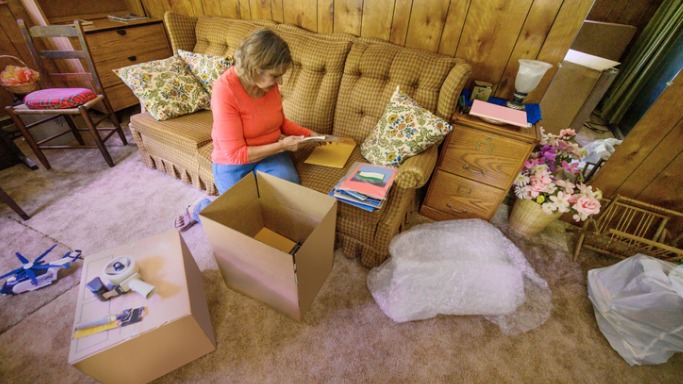This op-ed is part of a series about Forgotten Women—financially insecure women between the ages of 50 and 65—and policy solutions that can offer them hope. Learn more about the Hope Agenda from Independent Women’s Voice here. Originally appeared in RealClearHealth.
Women are living longer and working later into what should be their retirement years. While older Americans are more likely to enter retirement with greater wealth thanks to the growth in property values and retirement portfolios, women face greater financial insecurity. For many older women with little savings, unsteady employment, and health issues, thinking about retirement creates anxiety and fear. One hope for building financial security for women of different ages and marital statuses may be right over their heads.
The financial picture for many women aged 50+ is concerning. According to AARP Research, one in three women are very or somewhat worried about their current financial situation compared to just one in four men. Concern over finances is even more common among divorced, separated, or widowed women. Not surprisingly, they cite costs of living, living paycheck-to-paycheck, and difficulty managing money at higher rates than their male counterparts.
Women 50 or older are also worried about their financial futures. New polling from Independent Women’s Voice identified that 89% of women are looking for leaders to offer financial solutions for people who can’t find new work but can’t afford to retire. A GOBankingRates survey found that women are more likely than men to have nothing saved for retirement. Because they are more likely than men to have taken employment breaks to care for children or aging parents—48% of their lives versus 28% of men’s, according to Merrill Lynch—they enter retirement with less money saved. Nor do older women count on Social Security to be available or sufficient to sustain them.
Given that women’s life expectancy is six years longer than men’s, married women are likely to outlive their partner and their retirement assets, leaving them to figure out how to support themselves in their final years. Altogether, poverty rates for women 65+ are among the highest of any demographic. The burden of caring for aging women often falls on their daughters or daughters-in-law, as women are more likely than men to take on family caregiving tasks. These women may be approaching retirement age themselves, and also facing financial worry.
One asset that is far less susceptible to the whims of the market and that can provide long-term financial security is property. Women have overcome significant historical barriers—from being legally prevented from possessing homes and property until the 1830s—to now being major consumers in the housing market. Today, single women own more homes than single men; single women own 58% of the nearly 35.2 million homes owned by unmarried Americans, compared to 42% owned by men.
By itself, homeownership is inadequate to provide financial security. Property owners must be able to generate income from their investments. Renting out one’s property offers a host of benefits, including guaranteed monthly passive income, increased net worth, tax benefits, credit building, and savings for retirement. To be sure, being a landlady comes with a host of costly headaches, but it can provide financial freedom outside of the daily employment grind—something that many women may desire in their later years.
The challenge is that restrictions on land use, zoning rules, costly permitting processes, and restrictive regulations impede homeowners from turning unused dwelling spaces into domiciles for renters. A good place for policymakers to start would be allowing for and incentivizing the construction of multiple-unit or accessory dwelling units (ADUs) on single-family residential lots. Homeowners benefit from steady rental income and increased property values. Meanwhile, ADUs expand housing stock in a given area, which may improve housing affordability. For some families, ADUs may encourage intergenerational living situations and provide caregiving for young and aging family members.
ADUs come in many shapes and forms: duplexes and triplexes; detached structures such as tiny homes, backyard cottages, and granny flats; converted garages and workshops; additions; converted basements; and other spaces within homes.
Millions of ADUs may exist nationwide but operate outside of the government’s purview, which could lead to living in unsafe conditions.
State lawmakers recognize this is an area for reform, in some cases overruling restrictive policies of local jurisdictions. California reformed its housing policy to encourage ADUs in 2016. The results were rapid. Permitted ADUs grew from just over 1,000 in 2016 to over 24,000 in 2022 and comprise 19% of new housing permits. About 80,000 ADUs have been built since policy changes in 2016. Over a quarter (27%) of completed ADUs have qualified as low- or moderate-income units above the 20% for all new permitted housing. ADUs may not solve homelessness or the unaffordable housing crisis, but they are a start. And expanding housing stock is a much better direction than imposing rent control policies, which only suppress supply.
ADUs can boost a home’s value by 35%, but at a hefty price tag of $60,000 to $220,000. To help older and low-income homeowners afford the renovation and construction costs, cities like Boston, Charleston, and Orlando and states like California and Maryland are partnering with local organizations to offer grants and loans that would normally be unavailable in addition to guidance and relaxing onerous regulations.
Women are increasingly purchasing homes alone or will inherit properties from deceased spouses or parents. As high mortgage interest rates and inflation continue to make life increasingly unaffordable, policymakers can deploy these common-sense policy solutions to help these forgotten women use their biggest assets to build long-term financial security.






